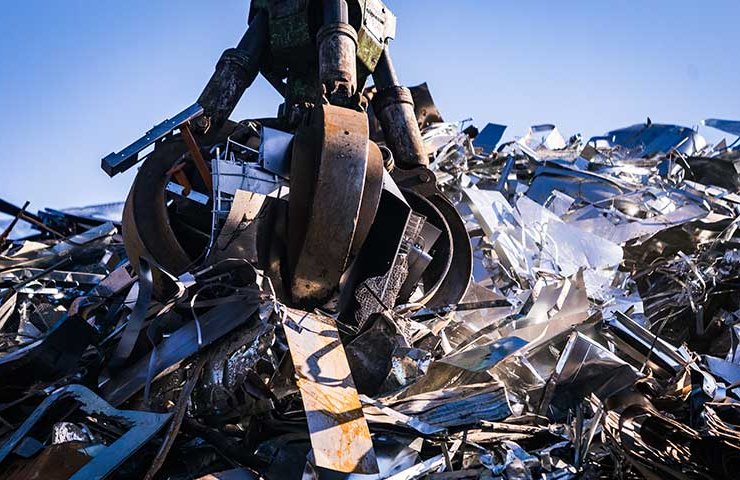the New Indian policy of scrap has caused a number of concerns of sudden growth mixed (unprocessed) scrap metal coming into the country, to the problems with creating recycling centers, said market participants.
Ministry of steel of India on 6 November announced its policy for the processing of steel scrap after in July, has requested industry feedback on the draft policy.
This policy was the result adopted by the government of India National policy in the area of steel in 2017, where it is expected that by 2030 the country will have 300 million tons of annual steel production. About 35-40% of total production in 2030 is expected due to electric arc and induction furnaces.
"the Policy of disposal must ensure the availability of high-quality scrap for the steel industry. Scrap is the main raw material for electric furnaces", - the Ministry said.
This policy may lead to a surge of mixed metal (unprocessed) scrap to India, said S & P Global Platts few market participants.
It comes at a time when countries around the world are looking out for waste metals after the tightening of the China import mixed metal.
due To the fact that India has the best opportunities for the processing of scrap at competitive prices, market participants said that the import is likely to vary depending on the type of scrap, not the volume.
"It's not a question of an increase or decrease of imports, it is a question of saving costs. Indian buyers are likely to import more raw scrap that for 20-30 dollars below the price of recycled scrap," said a British supplier. "Handle it in India much cheaper than in the US and Europe".
According to market participants, disposal of waste, aimed at the creation of this policy, may increase the possibility of India for metal scrap processing and to increase the import of mixed metal in the country. However, some added that future government intervention can prevent the inflow of such materials.
Policy assumed that India would need to create about 70 for the recycling of scrap in the country to meet the current deficit of about 7 million tons.
Each centre will have a processing capacity of about 100,000 tons per year, which will require about 300 collection centres and dismantling "provided that four of the collection center and disassembly service center for processing scrap", - the Ministry said.
When the steel production in India will reach 250 million tons a year, it needs to scrap reach 70-80 million tons per year. Currently, the needs of India in the scrap range at 30 million tons per year.
"this will take about 700 for the recycling of scrap metal, that is 700 shredders. They, in turn, will be supplied with a 2800-3000 collection centres and dismantling scattered across the country," the Ministry said.
"it's Definitely possible that India will become a major destination for unprocessed scrap, however, the objects will be opened not earlier than through two-three years after the implementation of the policy," said one of the largest Indian manufacturers. "A lot can happen in that time, the government may impose restrictions to this if the flow is too high."
After the tightening of China's position in relation to the import of waste into the country from 2017 countries such as Japan, have found alternative ways for their mixed metal scrap, including places such as Vietnam, Malaysia and recently India.
"After China, Japan has sent mixed metal scrap in Malaysia and Vietnam. But the government there now is too complicated. But India now seems to be another way," said Platts Japanese trader.
Meanwhile, the Association of materials processing India said that the achievement of self-sufficiency in scrap, a key policy objective, will be challenging, since the demand for scrap will continue to be much higher than the supply in India, because there is a need to meet the country's needs. the targeted steel production of 300 million tons / year by 2030.
Other market participants were also of the opinion that in order for India has reduced its scrap shortage, it is necessary to implement other policies in addition to the current policy. One potential policy was emphasized in relation to the arrangements for disposal of End of Life, or ESL, in India, are still at the planning stage, are actively supported by many in the automotive sector.
"firm policy of recycling of ELV will create a more stable supply of steel scrap in India and solve its environmental problems," said a source at the Indian factory. "However, to be self-sufficient will take time, and it may be difficult to achieve within the next decade."
Ministry of steel stated that he would work with the Ministry of skills development and entrepreneurship for development "new professional courses ... to teach people recycling PTV, home appliances and other wastes in an environmentally safe and secure way ..."
in addition, the Ministry of industry has stated that it "will consider a special status for eco-parks that should be created for the purposes of recycling and disposal of waste, and will consider the introduction of targeted tax benefits based on the processing, both direct and indirect taxes".




